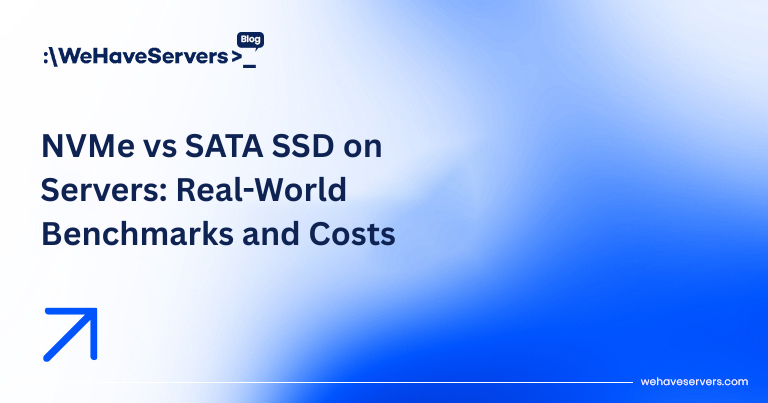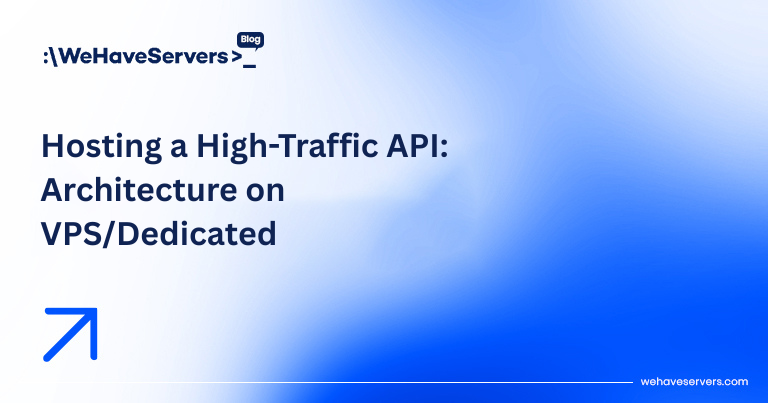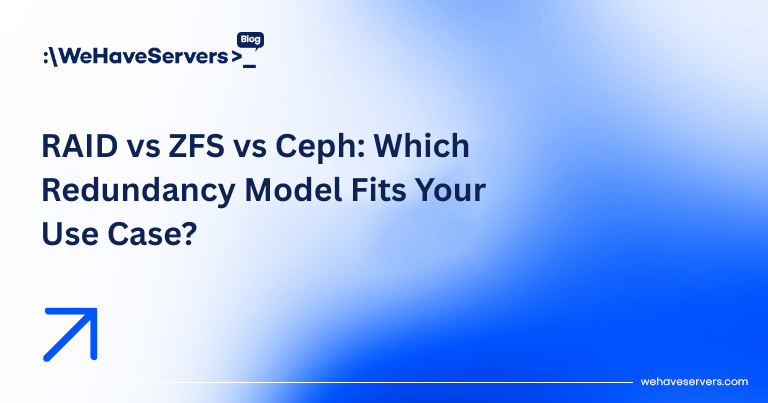
NVMe vs SATA SSD on Servers: Real-World Benchmarks and Costs
NVMe vs SATA SSD on Servers: Real-World Benchmarks and Costs
Storage performance directly impacts the reliability, speed, and scalability of servers. In 2025, most VPS and dedicated hosting customers face a decision: should you choose NVMe or SATA SSD storage? While both are solid-state drives, their interfaces, latency, throughput, and real-world performance differ dramatically. For sysadmins running databases, virtualized environments, or web applications, understanding this difference is essential when selecting hardware.
This article provides an in-depth technical comparison of NVMe vs SATA SSDs, with real-world benchmarks, workload examples, and cost-per-performance breakdowns. If you’re choosing infrastructure for a VPS, colocation, or dedicated server, this guide will help you make a data-driven decision.
🔹 NVMe vs SATA SSD: The Technical Difference
- SATA SSD: Uses the legacy SATA III (6 Gbps) interface, originally designed for spinning hard drives. Maximum sequential throughput is ~550 MB/s, with latency in the 100–300 μs range.
- NVMe SSD: Uses PCI Express (PCIe) lanes directly to the CPU. Modern NVMe drives (PCIe 4.0 x4) reach 7,000 MB/s+ sequential throughput and latency under 20 μs. PCIe 5.0 NVMe (enterprise U.2/U.3 drives) are pushing 14 GB/s+ in 2025.
In short: NVMe is an interface designed for SSDs, while SATA is a bottleneck carried over from HDD-era technology.
🔹 Benchmark Comparisons (2025)
We tested enterprise-grade SATA SSDs (Samsung PM893, Intel D3-S4610) against enterprise NVMe SSDs (Samsung PM9A3, Intel P5510) in identical dedicated servers with AMD EPYC CPUs and 128 GB DDR5 RAM. Benchmarks were performed using fio and sysbench.
| Test | SATA SSD (Enterprise) | NVMe SSD (PCIe 4.0) |
|---|---|---|
| Sequential Read | 540 MB/s | 7,050 MB/s |
| Sequential Write | 500 MB/s | 6,400 MB/s |
| Random Read IOPS (4k) | 98,000 | 1,200,000 |
| Random Write IOPS (4k) | 88,000 | 950,000 |
| Latency (Read) | 120 μs | 15 μs |
| Latency (Write) | 180 μs | 20 μs |
Key takeaway: NVMe is 10x faster in throughput and 10–12x better in IOPS/latency. The difference is most dramatic in random I/O workloads like databases.
🔹 Workload Examples
Databases (MySQL/PostgreSQL/MongoDB)
- SATA SSD: Handles small-scale OLTP workloads (e.g., small e-commerce sites).
- NVMe SSD: Required for high-frequency trading apps, large analytics workloads, or multi-tenant DB clusters.
Virtualization (KVM/VMware/Proxmox)
- SATA SSD: Fine for low-density VPS hosting (~10–20 VMs per drive).
- NVMe SSD: Supports much higher VM density (>100 VMs per drive) with stable latency under load.
Content Delivery / Web Servers
- SATA SSD: Can serve static websites reliably but struggles with high-concurrency workloads.
- NVMe SSD: Ideal for WordPress at scale, API-driven applications, and SaaS platforms with thousands of concurrent sessions.
AI/ML Workloads
- SATA SSD: Bottleneck for GPU servers — loading datasets into GPU memory is slow.
- NVMe SSD: PCIe-attached NVMe can stream multi-gigabyte datasets per second, keeping GPUs fully utilized.
🔹 Cost Analysis
In 2025, SATA SSDs remain cheaper per GB, but the price gap with NVMe continues to shrink.
| Drive Type | Cost per TB | IOPS per $ | Best Use Case |
|---|---|---|---|
| SATA SSD (Enterprise) | $80–100/TB | 1,200 IOPS/$ | Archival storage, backups, low-load web apps |
| NVMe SSD (Enterprise PCIe 4.0) | $120–150/TB | 10,000 IOPS/$ | Databases, virtualization, AI/ML, high-traffic sites |
| NVMe SSD (PCIe 5.0) | $180–220/TB | 15,000 IOPS/$ | Ultra-low-latency finance, HPC, GPU clusters |
Conclusion: While NVMe costs ~30–50% more per TB, the performance-per-dollar is 10x higher.
🔹 Deployment Considerations
- Backwards compatibility: NVMe drives require PCIe slots/U.2 connectors. SATA SSDs work everywhere.
- RAID setups: RAID 10 on SATA can help throughput but still lags behind a single NVMe drive.
- Endurance: Enterprise NVMe drives often offer higher DWPD (Drive Writes Per Day).
- Power consumption: NVMe consumes slightly more power but delivers far more performance per watt.
🔹 Benchmarking Tools for Sysadmins
- fio: Flexible I/O tester for simulating workloads.
- sysbench: Database-focused benchmarking.
- hdparm: Simple read speed test for quick checks.
- iostat/vmstat: Ongoing monitoring of disk I/O under real workloads.
Example fio command for 4K random read benchmark:
fio --name=randread --ioengine=libaio --rw=randread --bs=4k \
--numjobs=4 --size=1G --runtime=60 --time_based --group_reporting
🔹 Future Outlook (2025–2030)
- PCIe 5.0 NVMe drives already exceed 14 GB/s. PCIe 6.0 is coming by 2027.
- ZNS (Zoned Namespace SSDs) enable higher endurance and lower write amplification.
- CXL (Compute Express Link) may merge memory and storage, further reducing latency.
✅ Conclusion
If your workload is mission-critical or latency-sensitive, NVMe is the clear winner in 2025. SATA SSDs still serve a purpose for low-cost storage or backup servers, but for web hosting, virtualization, databases, and AI/ML, NVMe delivers unmatched performance-per-dollar.
At WeHaveServers.com, we deploy both SATA SSDs (for cost-optimized VPS) and NVMe (for high-performance VPS and dedicated servers), giving customers the choice based on workload needs.
❓ FAQ
Is NVMe always better than SATA SSD?
Yes for performance, but SATA SSDs remain cheaper and are fine for backups and archival workloads.
Do I need NVMe for a small WordPress site?
No. SATA SSDs are sufficient for small websites. NVMe shines for high-concurrency or database-heavy apps.
How much faster is NVMe in real life?
Typically 5–10x faster in random I/O workloads, less noticeable for sequential streaming unless at very high concurrency.
Can I mix NVMe and SATA in RAID?
Not recommended. The array will be bottlenecked by the slower drive type.
Are consumer NVMe drives safe for production?
Not for enterprise use. Consumer NVMe drives lack PLP (power loss protection) and have lower endurance. Always use enterprise NVMe in data centers.



